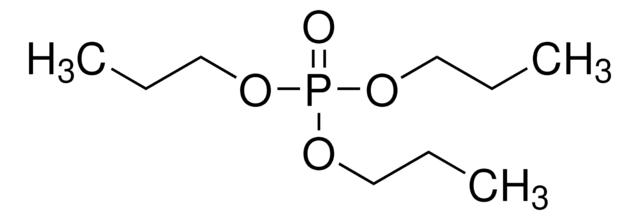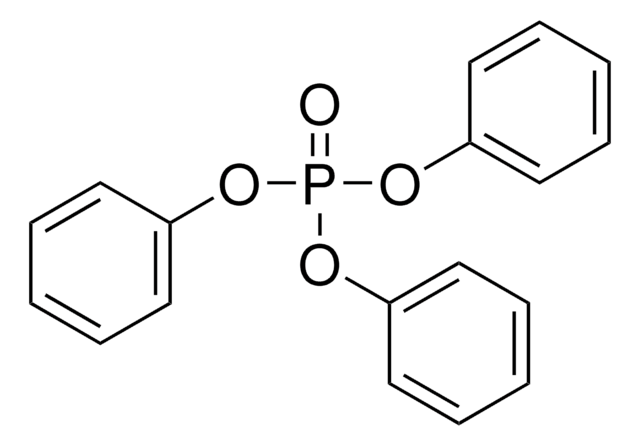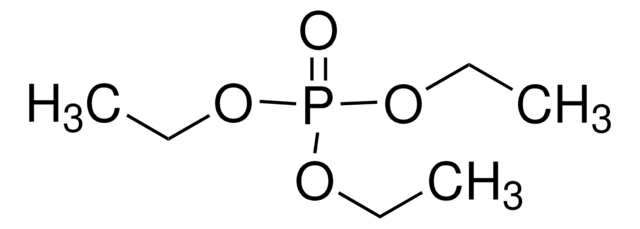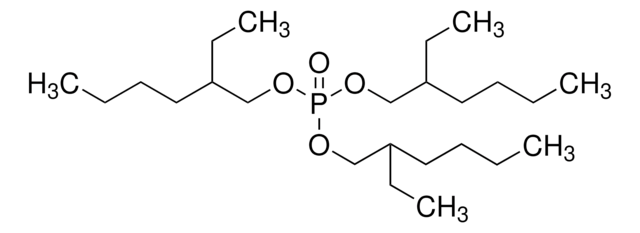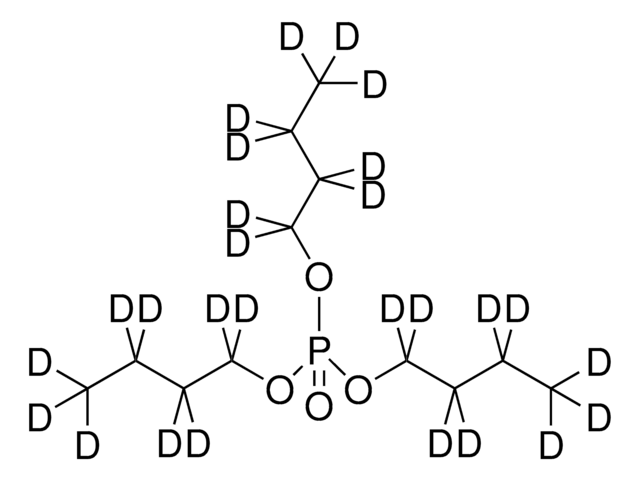Kluczowe dokumenty
240494
Tributyl phosphate
≥99%
Synonim(y):
TBP, TBPA
About This Item
Polecane produkty
gęstość pary
9.2 (vs air)
Poziom jakości
ciśnienie pary
27 mmHg ( 178 °C)
7.3 mmHg ( 150 °C)
Próba
≥99%
Postać
liquid
temp. samozapłonu
770 °F
współczynnik refrakcji
n20/D 1.424 (lit.)
tw
180-183 °C/22 mmHg (lit.)
mp
−79 °C (lit.)
rozpuszczalność
organic solvents: miscible
water: soluble (1mL in 165mL)
gęstość
0.979 g/mL at 25 °C (lit.)
grupa funkcyjna
phosphate
ciąg SMILES
CCCCOP(=O)(OCCCC)OCCCC
InChI
1S/C12H27O4P/c1-4-7-10-14-17(13,15-11-8-5-2)16-12-9-6-3/h4-12H2,1-3H3
Klucz InChI
STCOOQWBFONSKY-UHFFFAOYSA-N
Szukasz podobnych produktów? Odwiedź Przewodnik dotyczący porównywania produktów
Opis ogólny
Tributyl phosphate (TBP) is an organophosphate compound widely used as an extraction solvent, flame retardant, and plasticizer.
Zastosowanie
Hasło ostrzegawcze
Warning
Zwroty wskazujące rodzaj zagrożenia
Zwroty wskazujące środki ostrożności
Klasyfikacja zagrożeń
Acute Tox. 4 Oral - Aquatic Chronic 3 - Carc. 2 - Skin Irrit. 2
Kod klasy składowania
10 - Combustible liquids
Klasa zagrożenia wodnego (WGK)
WGK 2
Temperatura zapłonu (°F)
293.0 °F - closed cup
Temperatura zapłonu (°C)
145 °C - closed cup
Środki ochrony indywidualnej
Eyeshields, Faceshields, Gloves, type ABEK (EN14387) respirator filter
Wybierz jedną z najnowszych wersji:
Masz już ten produkt?
Dokumenty związane z niedawno zakupionymi produktami zostały zamieszczone w Bibliotece dokumentów.
Klienci oglądali również te produkty
Nasz zespół naukowców ma doświadczenie we wszystkich obszarach badań, w tym w naukach przyrodniczych, materiałoznawstwie, syntezie chemicznej, chromatografii, analityce i wielu innych dziedzinach.
Skontaktuj się z zespołem ds. pomocy technicznej




